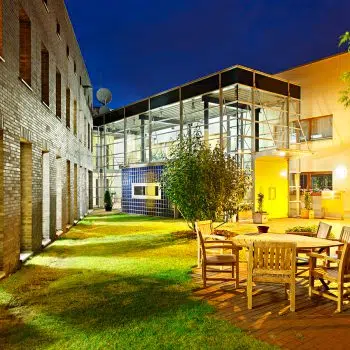Effective lighting contributes to public safety by improving visibility and surveillance. It reduces fear of crime, whilst increasing the opportunities to detect offenders. Lighting should meet Australian Standards as a minimum requirement. Crime and fear of crime reduction are specified as key objectives in the Australian Lighting Standard AS1158 for public streets, car parks and pedestrian areas.
The following should be considered as part of an organisation’s lighting strategy:
- Bright spots and shadows should be avoided where possible.
- Highly vulnerable areas and those that could conceal a potential attacker should be illuminated more brightly than areas designed for normal activity. The objective is to light up the criminal without spotlighting the victim.
- Lux levels of lighting outside a facility that will attract a more mature or elderly population should be above Australian Standards (AS1158). The lighting of the area should be twice as bright as the average development because twice as much brightness is required to create the same degree of perceived brightness for a person aged 60 compared to a person 20 years of age.
- Lighting should flow throughout the development and be increased around door entrances whilst minimising areas with glare pools.
- Signs indicating entrances, exits and emergency equipment around a facility should be illuminated.
- Path ways should be well lit without providing glare pools.
- Regular audits of lighting should be conducted to ensure blown globes or faulty timing devices are detected.
- Lighting should be left on in key locations throughout the facility to ensure security, cleaners or caretakers can see whilst patrolling or working.
- Consideration will need to be given to using deluxe cool white fluorescent lamps for lighting. They provide the best overall colour rendition. Current government policy is to provide mercury vapour (white light) in residential street areas. Consideration needs to be given to the population base of the facility and the need to reduce the perception or fear of crime.
- Vehicle access points that are monitored by CCTV cameras should be complemented by appropriate luminous levels.
- Increase lighting where bike paths intersect with other paths, roads, ramps to structures and at tunnels or subways.
[1] Stollard, Paul Ed, 1991, Crime Prevention though Housing Design, London, Chapman and Hall
[2]Brown, P, 2004. Public Lighting Policy, More Moreland Council.
